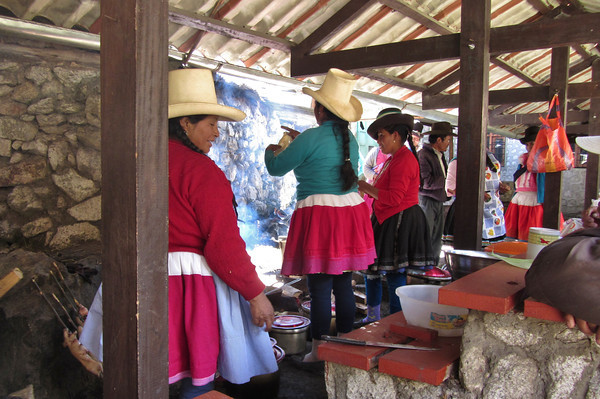What do you think of when I say the words “Hare Krishnas”? Most likely, you think of orange-clad devotees singing and proselytizing in airports in the 1970’s. And yes, you’d be right. That is part of their history. But it’s just one part and honestly, I think they’ve gotten a bad rap. How would I know? Because I just had the pleasure of spending the weekend with them at an eco-village they started 2 hours north of Mumbai. Before I fill you in on all the amazing details of the weekend, I think it’s important to give you a bit more information on the Hare Krishnas.
The International Society for Krishna Consciousness (ISKCON), also known as the Hare Krishna movement, was founded in New York City by AC Bhaktivedanta Swami Prabhupada in 1966. ISKCON is a monotheistic spiritual tradition based on the Sanskrit texts of the Bhagavad-gÄ«tÄ and the Bhagavata Purana. The mission of this non-sectarian movement is to promote the well-being of society by teaching the science of Krishna consciousness according to these ancient Vedic texts that date back over 5000 years. Devotees of the Hare Krishna Movement practice Bhakti-yoga, which teaches that the ultimate goal of life is to reawaken our dormant love for God, or Lord Krishna, the “all-attractive one.â€
We were introduced to ISKCON at a party our neighbors had on Janmashtami a year ago. It was there that we chanted and danced with the orange-clad monks and heard about the Govardhan Eco-village for the first time. We met the CEO of the Eco-village at that party and became friends with he and his family. As we spent more time together and heard about this fascinating place, we just knew we had to make a visit.
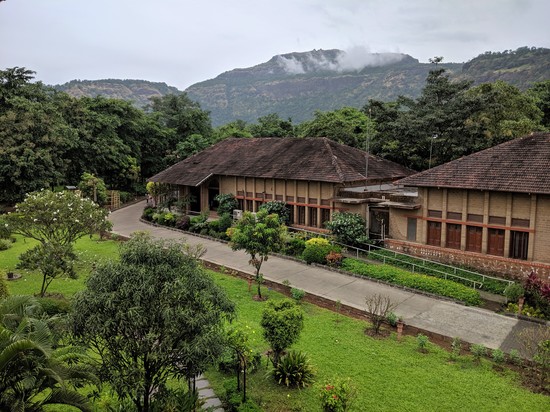
Our family hadn’t been out of Mumbai since returning in early August. I can’t even begin to describe how spectacular it was to breathe in fresh air and be enveloped by nature. And it didn’t hurt that the scenery was spectacular too!
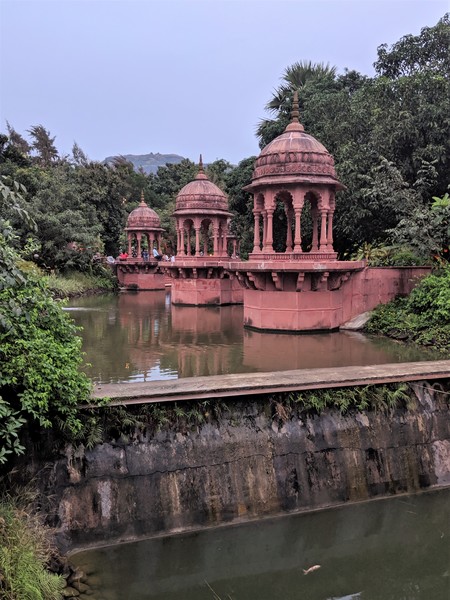
They had recreated a bunch of religious sites that are significant to the Hare Krishnas, including this 85 foot tall temple dedicated to Krishna. There was a ritual associated with it in which you walked around the structure 3 times and then knelt down and kissed the ground. Wish I could tell you the significance of that but I don’t remember. Sorry!
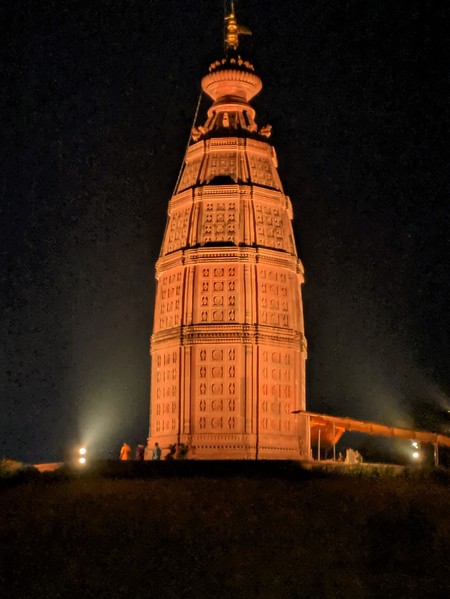
The eco-village is a whole bunch of things wrapped into one. One big component is education. There is a school of yoga, a school of sustainability and a school of knowledge where they study the ancient vedic texts. They’re in the process of creating partnerships with US colleges to do Study Abroad Programs there & my intention is to create a partnership between St. Ben’s/St. John’s (my beloved alma mater) and the Eco-village! Let’s see if I can make it happen!! Pretty sure it would be a match made in heaven… :)
Another component of it is social outreach. Some of the initiatives include an orphanage, women’s empowerment initiatives and the sharing of sustainable agriculture processes with the neighboring 60 farms. They are doing a LOT of good for the communities around them.
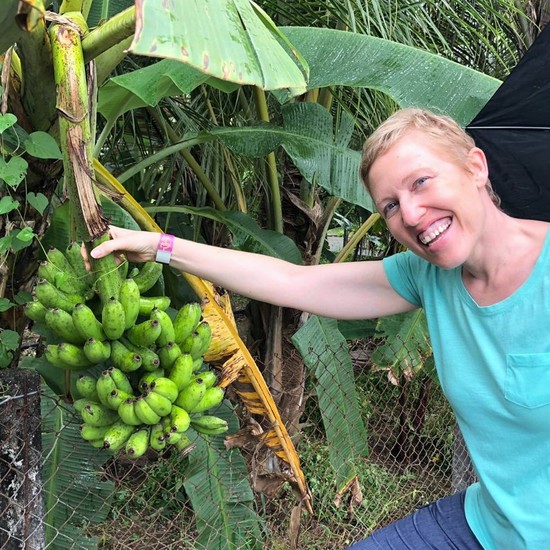
The third component was agriculture-related activities, although that seemed to be something that just sprang up instead of being intentionally planned. They grow a percent of the food consumed on site and also have some pet animals including 3 horses, 4 donkeys, 10 sheep and 100 cows. What was bizarre was how zen these animals were. They were all beautifully groomed and barely made a peep. Their energy was AMAZING. Guess that’s what happens when you’re surrounded by monks all the time!
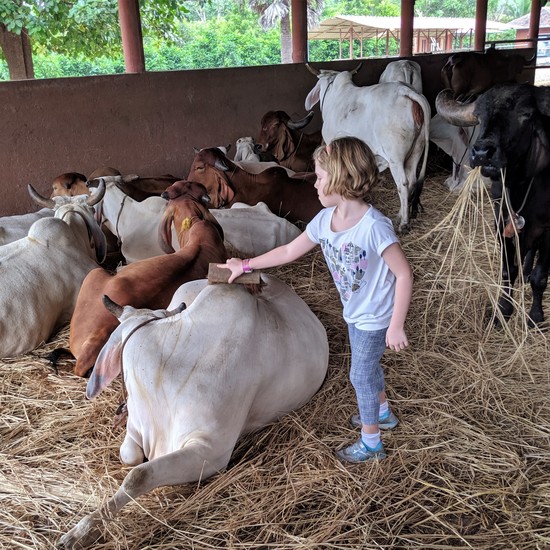
The fourth component was ecological innovation, which manifested itself in a variety of forms. There were a whole host of cool projects going on – an all-natural waste water treatment plant, a machine that converted the methane gas from cow feces into usable gas and a machine that turned plastic back into petroleum. Whoa, huh? Turns out that quite a few of the monks were former engineers and business executives who burned out and moved to the eco-village. We had the privilege of talking to a few of them and dang was it fascinating.
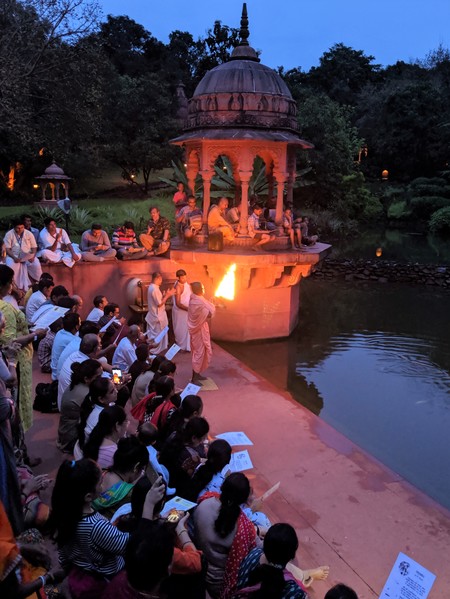
And of course spirituality made up a significant part, but that was just one facet of the place (and a much smaller portion than I expected). There was no evangelizing, just an invitation to participate in as much or little of the spiritual elements as you were interested in. We participated in an evening ritual that began with candles and Kirtan (chanting) down by the water. We then walked around the temple (see above) and ended with some dancing and singing in the main temple. It was a ton of fun and very energizing. One of the hands-down best things about Indians is how welcoming they are to foreigners and this was no exception!
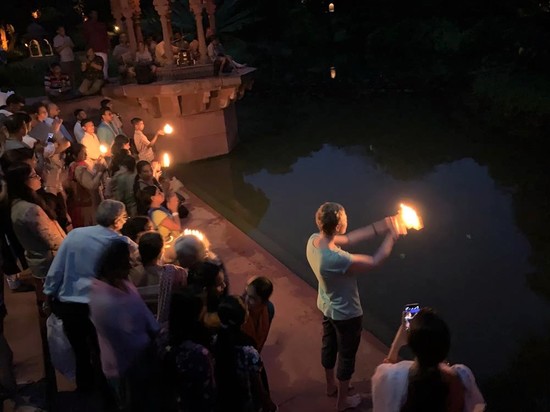
But beyond just welcoming us, our hosts truly went out of their way to make us feel like special guests. They gave us a personalized tour, a beautiful place to stay and even a private audience with the main spiritual guru of the place, Radhanath Swami! He is originally from Chicago and discovered the bhakti tradition (ISKCON) nearly 50 years ago when he was wandering around India searching for spiritual meaning in his life. We enjoyed some fascinating theological conversation (including the answer to Nia’s question of why cows are holy) and even got a signed copy of his book, The Journey Within.
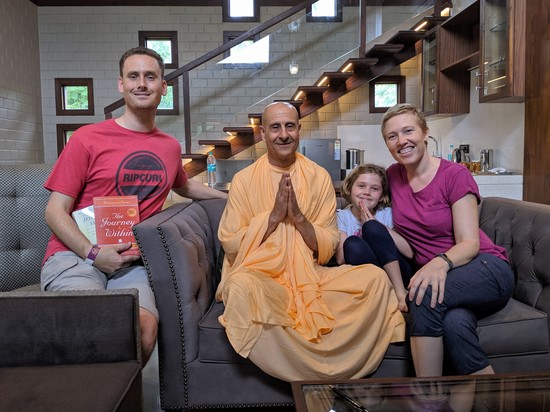
We felt very blessed to enjoy such a unique experience and will definitely return in the future (hopefully with some of you as our guests!) Did I mention that there’s a full Ayurvedic Treatment center too and daily yoga classes?!? So much goodness in one place! Another memorable India experience on the books… #grateful
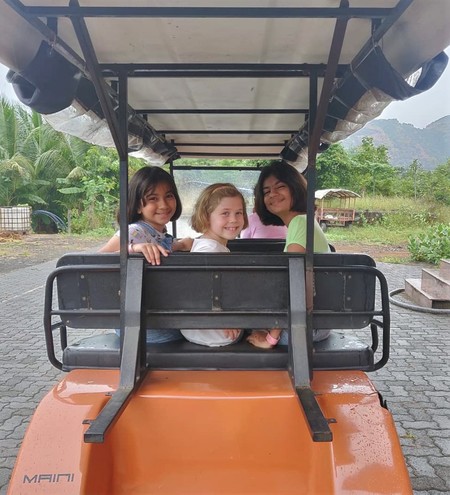
In the event you can’t get enough, the full picture gallery is HERE!
References: https://newvrindaban.com/hare-krishna-movement/ https://en.wikipedia.org/wiki/International_Society_for_Krishna_Consciousness

